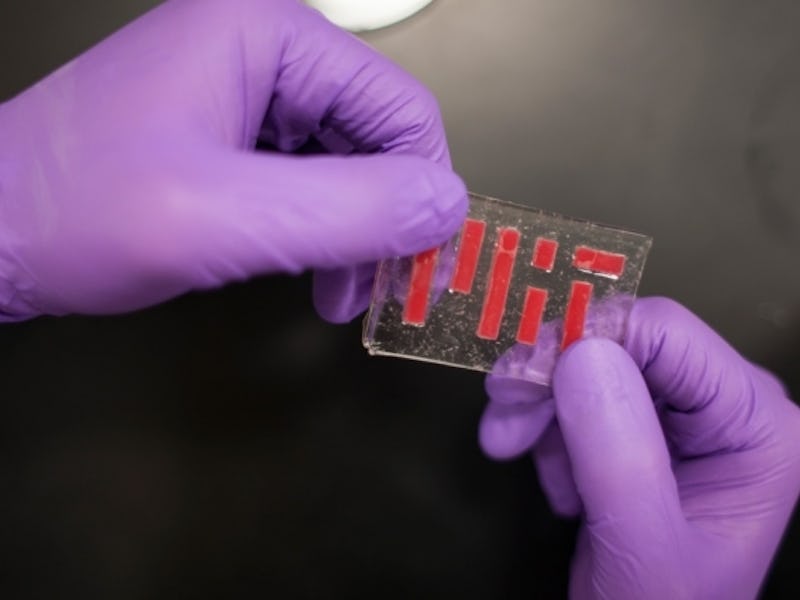MIT Researchers Just Solved a Major Problem With Futuristic Hydrogel Skin
And it involved sunscreen.

Even though cyborgs probably won’t be able to get skin cancer, they will still need sunscreen.
Today, a team from the Massachusetts Institute of Technology published a paper on a new type of hydrogel doesn’t dry out, i.e., it retains water. This breakthrough solves one of the big problems that has prevented hydrogel from being more widely used.
Hydrogel is an extremely stretchy, durable futuristic material made mostly of water that can be used to make contact lenses, smart bandages, bio-circuits, and artificial skin. But like Jell-O that’s been left on the counter too long, exposed hydrogel shrivels into a disgusting crusty mass, and this dehydration problem has been one of the things holding back any sort of hydrogel revolution.
To solve the evaporation problem, the researchers looked at human skin as inspiration. The outer layer of skin, called the epidermis, is what holds in moisture and protects the under layers of skin. And although skin is durable and can retain water, it is still soft and flexible. To replicate these qualities, they decided to coat the hydrogel in thin layers of elastic polymers like silicon or rubber.
The trick was getting the silicon to adhere to the hydrogel, as it is inherently water-repellent, and wouldn’t attach to a gel made from 90 percent water. They discovered that by dipping the hydrogel in benzophenone, a compound used to make sunscreen, they could transform the edges of the gel. Because of the way benzophenone reacts with ultraviolet light, it binds the two layers together into one super stretchy, skin-like material. The details of the coated hydrogel were published in Nature Communications.
The hydrogel can be printed with internal circuits that can be used for administering fluids in a band aid, or for bio-circuitry. Once the layers are bound together, the coated hydrogel can stretch up to seven times its original size without deforming these internal circuits.
A test of food dye running through microcircuits in the coated hydrogel.
This particular hydrogel is coming out of a lab that is working on using hydrogel for robots that could have soft, damp, yet highly strong and flexible skin. Because of its properties, it could be used to conduct chemicals through stretchy microchannels, or bio circuitry, both of which the researchers tested.
There aren’t any fleshy robots on the immediate horizon, but they could be coming. And when they do, hiding the sunscreen might be the only way to stop them from making more soft-skinned bots and taking over.